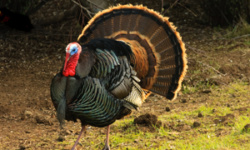The cool thing about a lot of states, Minnesota included, is that the amount of days we can turkey hunt has increased the past several years. For both shotgun hunters and bowhunters alike, the number of potential days afield is higher than ever, and that’s a good thing.
The only hang-up is planning when to use your time. I usually just hunt whenever I find time, but for turkeys in Minnesota, I now bring along one of my 7-year-old daughters, too. This means planning around when the most activity is likely around my blinds.
To accomplish this, I do two things. The first is to throw up a couple of cameras and check them every week. This allows me to figure out when the birds are most likely to be near specific blinds, and that means when I’ve got a little girl in tow, I can go where the chances are best that we’ll have some gobbler interaction.
The second thing is try to get out and listen a few times at sunrise before the season opens. Trail cameras are nice for getting a snapshot of when certain birds walked through specific spots, and tying that intel into a couple hours of birds gobbling through their morning routine is even more valuable when it comes to hunt planning.
If you’re interested in dialing into when the birds are hitting your spot, it’s pretty hard to beat the one-two combo of trail cameras and early-morning listening sessions. This might not be necessary if the gobblers are super active and cruising, but by the looks of the forecast for the first part of our season, I wouldn’t pass up any opportunity to get a little advantage on the daily comings and goings of the local birds. It could be a tough first week or two, unless the weather opens up and we see real spring roll in.






